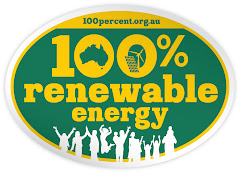Discover Simple, Private Sharing at Drop.io
Steve and Naomi from Rising Tide reporting from Bolivia
Some countries around the world are feeling the effects of climate change more than others, yet most of us are unaware of these struggles. Australia is doing relatively well coping with the current effects of climate change for now, at least compared to some low lying island nations or communities reliant on the melt waters from glaciers.
This was made amazingly clear at the Bolivian hosted World People’s Conference on Climate Change and the Rights of Mother Earth, April 2010. Throughout the conference, people spoke about losing human rights due to water shortages. Glacier-fed drinking water disappearing as global warming melts the snowy peaks away.
We learned that one of the glaciers in the Andes mountain chain, Chacaltaya was once a popular ski field, but has completely disappeared, years earlier than scientists predicted. And according to these same scientists, in the next 20-30 years most of the glaciers right across the Andes will go, affecting access to water for 70 million people.
One woman was very direct when talking us. “What can we do to stop this?”
We considered Australia’s contribution to these climate problems. In Australia, we mine and burn coal as our number one energy source. We have some of the world’s largest per person carbon emissions due to our dirty energy supply. Even this seems insignificant compared to the coal we mine and export, releasing more CO2 than all of our domestic emissions combined.
Australia is the world’s biggest coal exporter, and state and federal governments are planning to expand this deadly industry, building roads and railways so we can send the coal to the ports faster, and pushing for new mines to be opened. That is, unless we stop them.
After a little scratching of our heads we turned back to the woman, “We could paint a banner with a glacier-fed community that reads, Please Stop Mining Coal, Climate Change is Taking Our Water”.
There was no going back now. This woman’s question set us on a path high into the Andes Mountains in search of an appropriate community. We found ourselves in the meeting room of local NGO Aqua Sustentable (Water Sustainability) explaining our odd sounding idea to strangers we hoped could help us in our quest to share this message with Australians back home.
Our enthusiasm caught on and days later we took off further up the mountains with their team. Within three hours we arrived at the Khapi community, passing seemingly endless fields of fresh growing food along the way. We learned the Khapi community is made up of about 40 families, all working together to grow their food, live in mud brick homes and use the glacier-fed water supply that literally flows right past their houses.
Upon arriving at the community, we were greeted by 30 smiling faces at the primary school. To begin, we gave a short presentation about Australia (and our world famous kangaroos) the coal industry, renewable alternatives and our climate change work back home. We spoke in English, another woman translated into Spanish, and then another young man spoke in the local Aymara language. Luckily, the photographs projected up onto the wall told most of the story.
It wasn’t a fun story to tell. Photos from near our home in the Hunter Valley NSW, showed open cut coal mining. Tiny spots in the dark hole were revealed to be enormous trucks hauling tones upon tones of coal. Huge smoke stacks spewing dark clouds of pollution. The more we told the story, the more the reality of what is going on really hit us.
The children seemed glued to the slides, including the photos of Australian banners. When we explained our banner idea they all cheered with excitement. They now had a chance to paint their own.
Discover Simple, Private Sharing at Drop.io
The kids loved it. We were very impressed with the way they concentrated to make the banner the best it could be. They were obviously very proud of their hard work, parading the banner around the community above their heads, laughing and carrying on.
They soon reached a special lookout where we could see the towering glacier in all its glory. Illimani.
After the laughter and joy we shared with the kids, it was sobering to hear the words of community leader Severino Cortez Bilbao. “Recently we've started thinking about our Illimani. Before it was pure white, right down to there. In the last 5 or 6 years it's suffered badly, it's all black. Some people don't think about it, but we are thinking about it, we're thinking about our children, those who will come after, because we're already getting on, we may not see what happens later on. If Illimani dries up, there'll be no water and no life, no life.”
This experience turned out to be far more than a banner painting exercise. It was life changing. We knew a little of warming events in mountainous regions of the world, but it was something else to visit a community where their glacier and water supply is disappearing before their eyes.
The challenge to support climate affected communities and to encourage action against climate change and coal mining is a large one, but the smiles of those children with the most to loose will stick with us for a while yet.
Discover Simple, Private Sharing at Drop.io





No comments:
Post a Comment